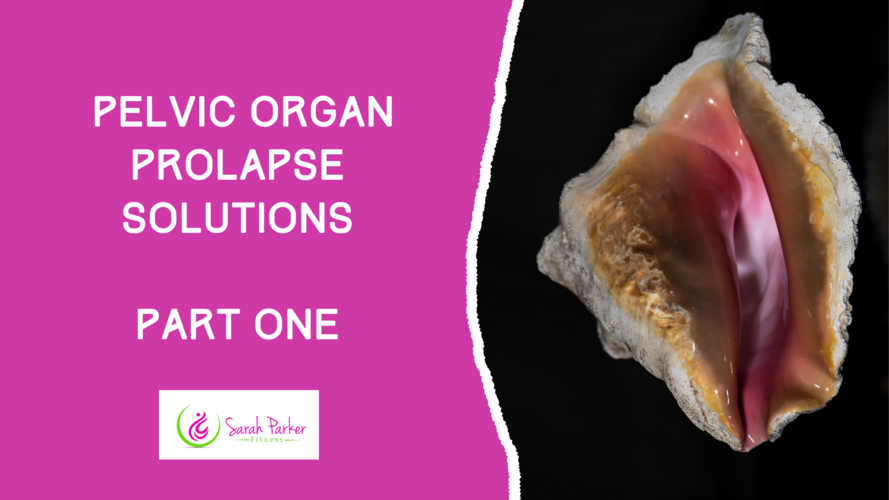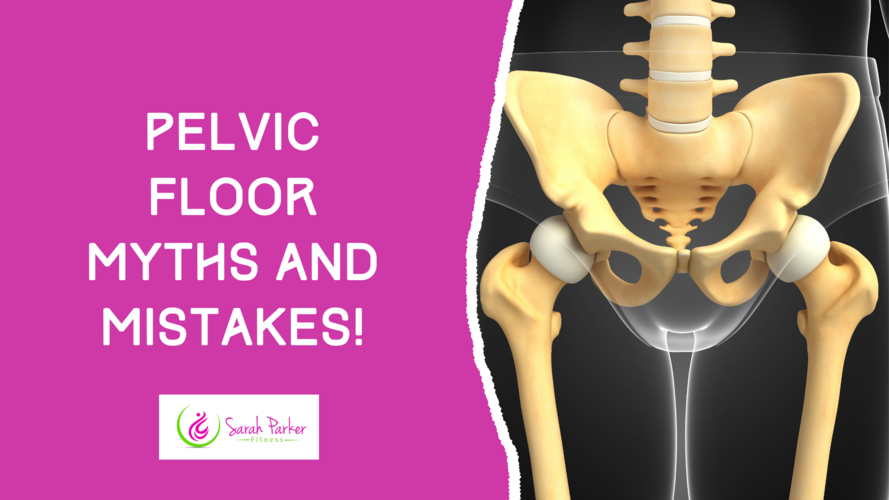BLOG
pelvic organ prolapse
Twenty years on and I find myself grateful
This month is Prolapse Awareness month, a subject that's quite important to me and has definitely contributed to where I am today and what I do
When you first get diagnosed with a prolapse it often makes you question why it happened and what it was you did to make it happen
Then you start to miss out all the things that may have been the reason for it, or could make it worse
And then you think about strengthening the pelvic floor
I went through all these things - I blamed exercise first …
Core strength without the strain
Did you know your core should switch on JUST BEFORE it's needed?
And that there should be no feeling of strain or bearing down?
Or that you can use other parts of your body to initiate a core connection - instead of sucking in, zipping up or lifting up on pelvic floor
Find out more about your core in the videos below!
If you would like to learn more about switching on your pelvic floor and core without straining and helping it to become more of an automatic switch on - I have a masterc…
Upper body mobility sequence
A few upper body moves you can easily fit into your day - even while sat at your desk!
Tightness in the upper body can affect your posture, ability to reach, create pain in the jaw, neck, shoulders and low back, contribute to pelvic floor dysfunction and can even affect your heart!
So getting more movement in is key - how many ways can you move your ribs?
Pelvic Organ Prolapse Solutions
It's been a while since my first blog about prolapse and a few things have changed since then. So I thought I'd do a couple of updates
There are two ways you can look at helping with POP symptoms - what can you do to prevent things getting worse and what can you do to make things better.
So first we'll look at preventing things getting worse
One of the key things with this is looking at intra abdominal pressure (IAP)
IAP is the pressure within the abdominal cavity and is reliant on the flui…
What is the best exercise for a prolapse?
I was asked a few weeks ago for the top exercises someone could do to help a prolapse.
My answers were:
- It depends
- Hypopressives
The thing with prolapse is that it can happen because of so many factors and it's not just about strengthening the pelvic floor.
And even just pelvic floor strength isn't that simple.
The pelvic floor is made up of layers of muscle, going in a variety of directions.
It has links with muscles inside the pelvis and outside the pelvis.
It has connections all…
Pelvic Floor Exercises Mistakes - and how to do it right
Myth #1 - Leaking is inevitable after childbirth, menopause and as you age
But just because it’s common, that doesn’t mean you have to put up with it!
How you can help your pelvic floor
However taking your time, …
Pelvic Organ Prolapse
Prolapse is the descent of one or more internal organs that then push into the vaginal wall. There are different stages – mild, moderate to extending outside the body. There are many symptoms, many of which could be attributed to other ailments.
- Urinary incontin…
Categories
- Parenting (8)
- Pelvic floor (23)
- Pregnancy (9)
- postnatal (26)
- diastasis (4)
- exercise (42)
- postnatal exercise (14)
- caesarean (8)
- healing foods (2)
- nutrition (3)
- Uncategorized (5)
- pregnancy exercise (11)
- prolapse (9)
- Pilates (10)
- kegels (7)
- pelvic organ prolapse (9)
- mothers day (2)
- mothers love (2)
- body shaming (2)
- c-section (3)
- health (46)
- breathing (11)
- core strength (14)
- relaxation (11)
- diastasis recti (4)
- mummy tummy (3)
- fitness (23)
- healthy living (26)
- old age (12)
- prenatal (7)
- back pain (6)
- pelvic girdle pain (1)
- PGP (3)
- pregnancy (3)
- abdominal exercises (5)
- crunches (4)
- c-section recovery (3)
- childbirth (1)
- healing (4)
- six week check (1)
- wound (2)
- anniversary (1)
- exercise classes (12)
- Sarah Parker Fitness (5)
- thanks (1)
- bladder health (2)
- incontinence (6)
- pregnancy pain (2)
- sciatic pain (1)
- breastfeeding (2)
- new mum (3)
- return to exercise (6)
- feet (2)
- gait (2)
- posture (6)
- walking (4)
- baby development (1)
- goals (3)
- New Years resolutions (3)
- healthy eating (1)
- benefits of exercise (9)
- exercise pill (4)
- core exercise (5)
- aching after exercise (1)
- DOMS (1)
- muscles soreness (1)
- healthy choices (13)
- mothering (1)
- fun (4)
- mum guilt (2)
- mum life (2)
- national breastfeeding week (1)
- self-care (18)
- aging well (10)
- workout (8)
- LBT (3)
- cardio (2)
- heart health (6)
- mobility (5)
- stretches (5)
- stress relief (8)
- back care (3)
- walkfit (3)
- beginners (3)
- hypopressives (2)
- menopause (1)
- brain health (1)
- menopause (1)
- mindfulness (1)
- beginners exercise (1)
- gentle exercise (1)
- strength (1)
- kettlebells (1)
- trigger point Pilates (1)



